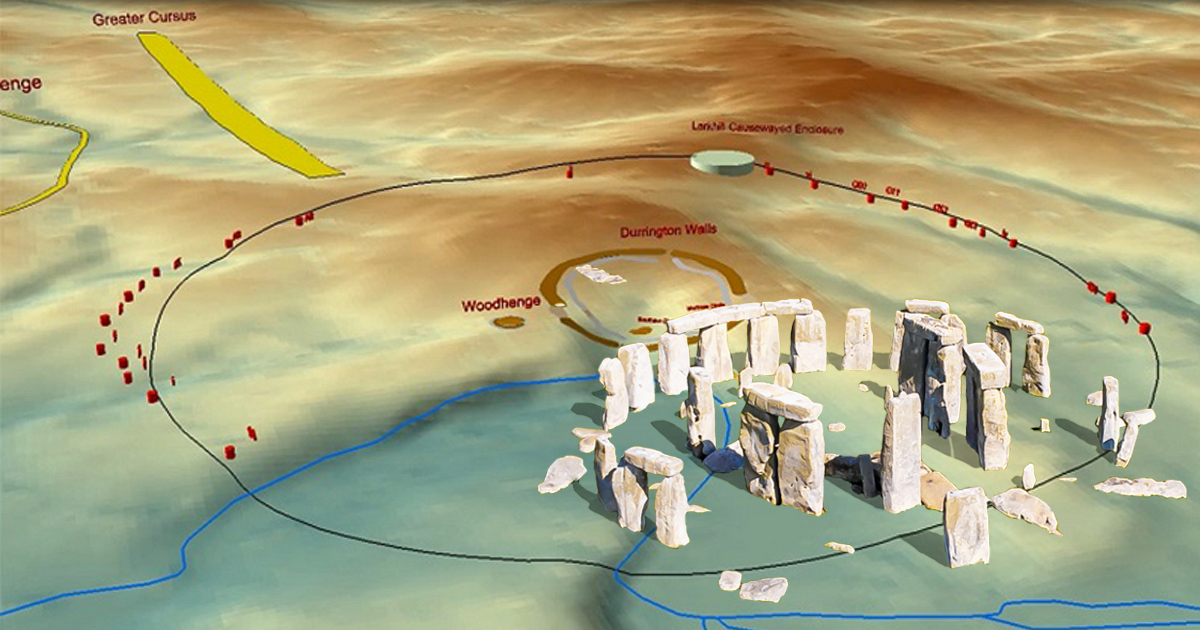A team in England have reportedly found Britain’s largest ever prehistoric structure encircling Stonehenge. A ring of ancient pits has been uncovered in Wiltshire, England and it’s causing heads to spin. Stunned archaeologists removed layers of loose clay to reveal approx 20 shafts surrounding the site of Durrington Walls. Current thinking is the team, led by the University of Bradford, have broken records by locating the biggest prehistoric structure ever found in Britain.
Thought to be at least 4, 500 years old – the age of Durrington itself – the pits are 30 ft in diameter and 15 ft deep. Together they form a ring 1.2 miles wide. They were apparently made, then left exposed with clay forming over the centuries. Research has been published online as an open access document for digital journal Internet Archaeology.
This discovery was made possible thanks to advances in technology, used alongside traditional techniques. Smithsonian Magazine writes, “a renewed round of remote-sensing testing and ground sampling” was behind the fantastic find. The presence of some pits has been known about since 1916. However their true extent, plus the idea they might have a combined purpose, has proved quite literally earth shattering.
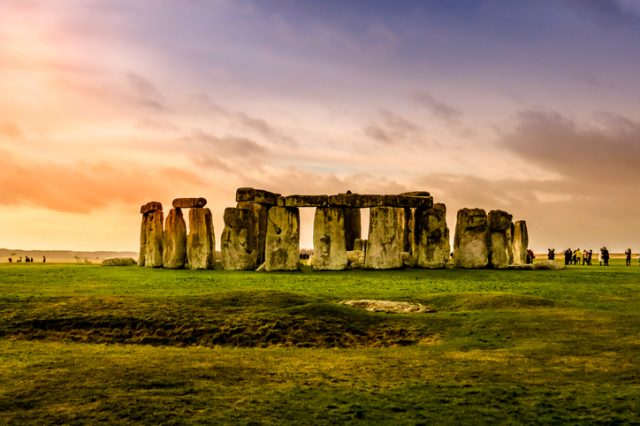
A couple of miles or so from Stonehenge, Durrington represents Neolithic R ‘n R away from the business of druidic ritual. In a statement released by the University of Bradford, National Trust archaeologist Dr Nick Snashall calls it “the place where the builders of Stonehenge lived and feasted”.
What purpose do the pits, or shafts, serve? Referring to views expressed by lead researcher Prof Vince Gaffney (Bradford), BBC News writes “a ‘proper excavation’ was required to determine the exact nature of the pits”. Yet some theories have been floated. Previous speculation from before the ring was revealed pegs them as drinking holes for cattle, or even sinkholes.
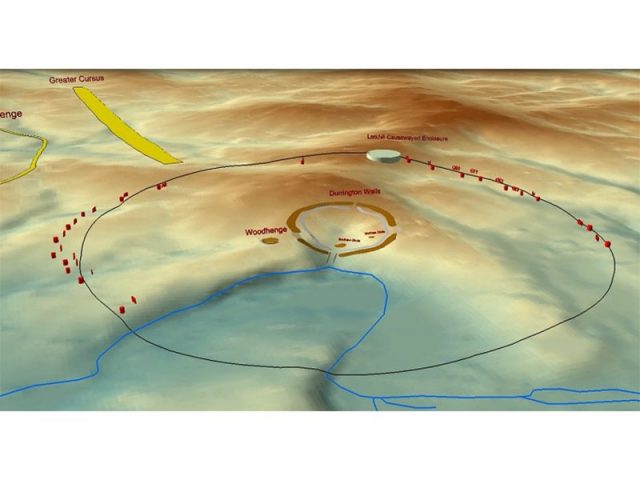
With this fresh insight into Neolithic life, opinions have been revised. A boundary is believed to be a likely use. “It is thought the features, along with an internal post line, could have guided people towards the religious sites and warned others not to cross the boundary” says the University of Bradford statement.
Ultimately more work will need to be done to get to the bottom of things. Speaking of getting to the bottom, bone fragments were found resting in the pits. Dating back 2,500 years, the organic evidence will help enable the team to explore thousands of years of Henge history. Whatever it turns out to be, the circle would have required an enormous amount of planning.
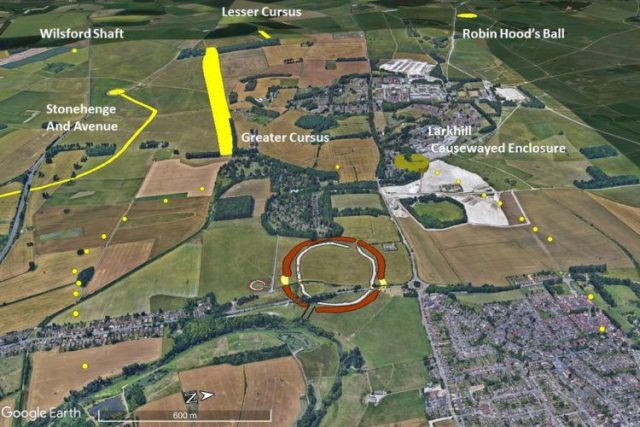
The consortium of archaeologists – working under the Stonehenge Hidden Landscape Project – hope this turns the page for ancient excavations at the site. “These recent studies demonstrate the potential for remote sensing survey to provide new evidence for hitherto unknown features or monumental structures around the henge at Durrington Walls” they say on Internet Archaeology, “and that this information can supplement the results of recent, large research projects on and around the monument”.
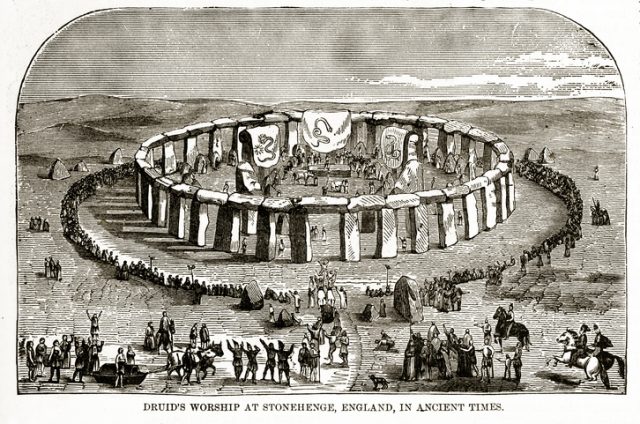
For experts, it’s a tantalizing glimpse at what the civilization around Stonehenge was getting up to thousands of years ago. Fellow team member Dr Martin Bates (University of Wales) comments: “Clearly sophisticated practices demonstrate that the people were so in tune with natural events to an extent that we can barely conceive in the modern world we live in today.”
Prof Gaffney adds the research “demonstrates the significance of Durrington Walls Henge, the complexity of the monumental structures within the Stonehenge landscape, and the capacity and desire of Neolithic communities to record their cosmological belief systems in ways, and at a scale, that we had never previously anticipated.”
Back in 2020, a major road tunnel planned to run under Stonehenge is creating an alleged nightmare for excavators. First proposed a quarter of a century ago, it’s a replacement for the A303 road. History hunters cite the example of the pit ring to deter such extensive underground work.
Prof Mike Parker Pearson (University College London) is quoted by The Guardian, calling the discovery “just another reason to give up this disastrous white elephant of a scheme.” The government will make a final decision next month.
